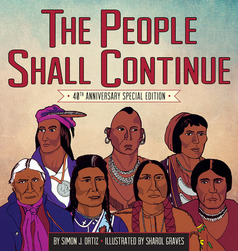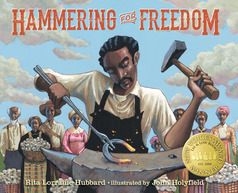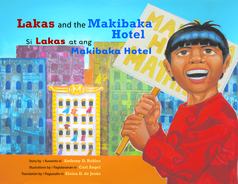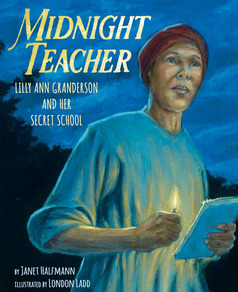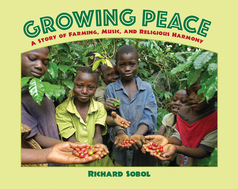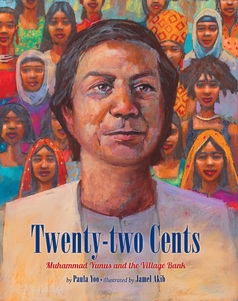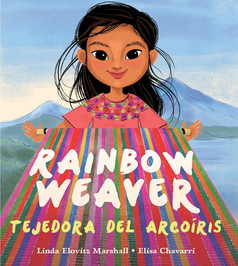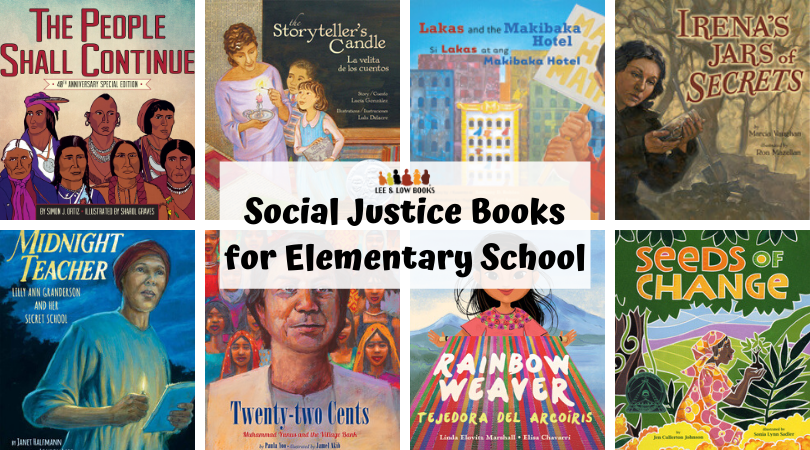
While the term “social justice” may seem overly complex or political to adults, young people are deeply attuned to concepts of equality and fairness and how these play out within their homes, classrooms, and communities. Increasingly, elementary schools are including units on social activism, social justice, or social change. Teaching about historical figures and fictional characters who have stood up for peace, equity, and justice provides rich opportunities for social and emotional learning and helps to prepare students to become global citizens who can advocate for important causes and enact change in their communities.
Children’s books are an excellent entry point into units on social justice. Narrative nonfiction provides models of real people who have stood up for what’s right; fiction provides opportunities for discussion about difficult choices and character traits like courage, persistence, and respect.
Below are ten of our favorite social justice books for elementary school that allow young readers to build an understanding of social justice and activism in the context of gender, socioeconomic status, race, or the environment:
The People Shall Continue, by Simon Ortiz and illustrated by Sharol Graves
Told in the rhythms of traditional oral narrative, this powerful telling of the history of the Native/Indigenous peoples of North America recounts their story from Creation to the invasion and usurpation of Native lands. Also available in Spanish.
Hammering for Freedom: The William Lewis Story, by Rita Lorraine Hubbard and illustrated by John Holyfield
The inspirational story of William “Bill” Lewis, a hardworking blacksmith who slowly saved his money and bought the freedom of each and every member of his enslaved family.
Lakas and the Makibaka Hotel, by Anthony Robles and illustrated by Carl Angel
When Lakas strolls through his neighborhood one sunny afternoon, the last thing he expects to find is a group of drum-beating, tap-dancing, karaoke-singing new friends. But these new friends face a crisis: the Makibaka Hotel, where they make their home, is about to be sold. This bilingual book (English and Tagalog) explores the impact of gentrification and development on a community.
Seeds of Change: Planting a Path to Peace, by Jen Cullerton Johnson and illustrated by Sonia Lynn Sadler
The award-winning biography of scientist Wangari Maathai, the first African woman—and first environmentalist—to win a Nobel Peace Prize (in 2004) for her work planting trees in her native Kenya.
The Storyteller’s Candle: La velita de los cuentos, by Lucía González and illustrated by Lulu Delacre
A bilingual homage to Pura Belpré, New York City’s first Latina librarian. Through her vision and dedication, the warmth of Puerto Rico came to the island of Manhattan in a most unexpected way.
Irena’s Jars of Secrets, by Marcia Vaughan and illustrated by Ron Mazellan
A picture book biography of Irena Sendler, a Polish Catholic social worker who helped save nearly 2500 Jewish children during the Nazi occupation of Poland during World War II.
Midnight Teacher: Lilly Ann Granderson and Her Secret School, by Janet Halfmann and illustrated by London Ladd
This historical fiction picture book reveals the unknown story of Lilly Ann Granderson, an African-American teacher who risked her life to teach others during slavery.
Growing Peace: A Story of Farming, Music, and Religious Harmony, by Richard Sobol
This photo-essay for children is a story of coexistence, focusing on Jewish, Muslim, and Christian families in a Ugandan village who created a Fair Trade Coffee Cooperative and learned to live and work together peacefully.
Twenty-two Cents: Muhammad Yunus and the Village Bank, by Paula Yoo, illustrated by Jamel Akib
A biography of 2006 Nobel Peace Prize winner Muhammad Yunus, who revolutionized global antipoverty efforts by developing the innovative economic concept of micro-lending.
Rainbow Weaver/Tejedora del arcoíris, by Linda Elovitz Marshall and illustrated by Elisa Chavarri
In this bilingual picture book, a young Mayan girl discovers how to repurpose plastic bags to create colorful weavings. Based on an actual recycling movement in Guatemala.
Want more book recommendations? Browse our full social activism book collection or download our printable Social Activism Diverse Reading List.








